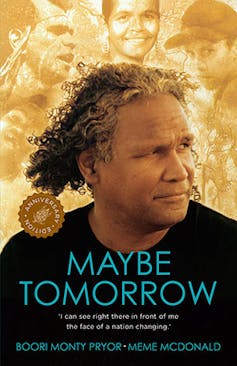Jamie Oliver’s novel really missed the mark. There are plenty of fantastic First Nations’ books if schools look for them
- Written by Amy Thomson, PhD candidate, Senior Research Assistant, School of Education, The University of Queensland

Celebrity chef Jamie Oliver’s new fantasy novel for primary students, Billy and the Epic Escape, features a First Nations character.
As The Guardian reports, it features a “young First Nations girl living in foster care in an Indigenous community near Alice Springs who gets abducted by the novel’s villain”.
The book was published without consultation with any Indigenous individual or community and has been met with condemnation from Indigenous groups. The National Aboriginal and Torres Strait Islander Education Corporation says it contributes to the “erasure, trivialisation, and stereotyping of First Nations people’s and experience”.
Billy and the Epic Escape has since been pulled from the shelves by its publisher and Oliver has issued an apology.
There are plenty of other, much more suitable options out there if schools want to use contemporary Indigenous texts in their classrooms.
Why is Jamie Oliver’s book a problem?
As Amy Thomson’s 2024 research on English teaching shows, Indigenous voices and stories are sorely missing from Australian classrooms.
While the curriculum encourages teachers to select texts from diverse sources, “the influences of British colonisation manifests in Australian English teachers’ text selection as they continue to choose texts from the ‘canon’”.
Other research also shows how prioritising traditional texts (such as Shakespeare) can silence Indigenous perspectives in the classroom.
But it is essential Indigenous voices and stories of lived experience are prioritised in our pursuit of truth telling and reconciliation in Australia.
In another 2024 paper, Thomson shows how portrayals of Indigenous peoples in fiction have an impact on how children and young people relate to and understand Indigenous people, cultures and histories.
Other Indigenous researchers have stressed the importance of young people engaging with truthful representations of Indigenous Australians and our resilience through First Nations-authored literature.
Through Indigenous texts, the impact of colonisation is not restricted to the past – we show young people our cultures are still here and colonisation is a complex and ongoing process.
At the same time, we know some educators are worried about teaching and talking about Indigenous content. They fear they will make mistakes or misrepresent Indigenous knowledge and perspectives.
There are so many other options
There is an abundance of First Nations-authored texts and stories to include in today’s Australian classrooms for both primary and high school students.





